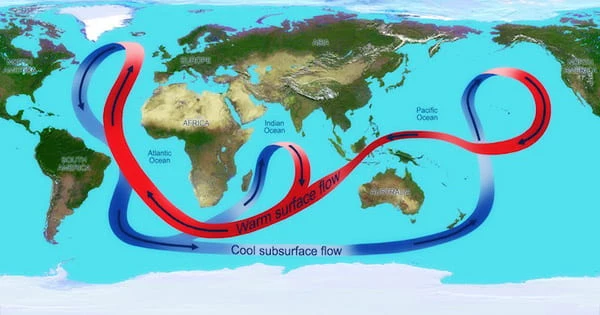The daily variability of the circulation of important deep currents in the South Atlantic Ocean has been reported for the first time in a new study from oceanographers at NOAA and the University of Miami Rosenstiel School’s Cooperative Institute for Marine and Atmospheric Studies (CIMAS).
Strong variations in these crucial currents, changes that are connected to global climate and weather, are shown by the research by the lead researchers based at the University of Miami’s Rosenstiel School of Marine and Atmospheric Science (UM) and NOAA’s Atlantic Oceanographic and Meteorological Laboratory (AOML).
An important new finding about the larger Meridional Overturning Circulation (MOC) in the Atlantic is that the circulation patterns in the upper and deeper layers of the South Atlantic frequently vary independently of one another, according to the study, which was published in the journal Science Advances.
“A key finding from this study is that our data showed that the ocean currents in the deepest parts of the South Atlantic Ocean behave differently than we thought before we had this new long-term dataset, which may have large implications for the climate and weather forecasts made by ocean models in the future,” said Marion Kersale, an oceanographer with the UM Rosenstiel School’s Cooperative Institute for Marine and Atmospheric Studies and lead author on the study.
One of the key elements of ocean circulation, which continuously transports heat, salt, carbon, and nutrients across the world’s oceans, is the MOC. Changes in sea level, extreme weather, and precipitation patterns are just a few of the global scale climate phenomena that are significantly impacted by MOC variations.
The MOC is made up of the abyssal cell, which is composed of colder, denser waters beneath an upper cell of warmer, lighter waters. These water masses circulate around the entire ocean, exchanging nutrients, carbon, temperature, and salinity as they go.
A key finding from this study is that our data showed that the ocean currents in the deepest parts of the South Atlantic Ocean behave differently than we thought before we had this new long-term dataset, which may have large implications for the climate and weather forecasts made by ocean models in the future.
Marion Kersale
The full-depth vertical, horizontal, and temporal resolution of the MOC were remarkably revealed by this investigation. The estimation of the strength of the abyssal cell (from 3000 m to the seafloor), which was previously only available as once-a-decade snapshot estimates from trans-basin ship sections, is a significant new finding from this study.
This study discovered that at all time scales, from a few days to a year, the circulation in the upper layer is more vigorous than that in the very deep, or abyssal, layer. The behavior of the flows in the upper and deep ocean layers varies, which may have an impact on how the entire MOC system affects sea level rise and hurricane intensification in the Atlantic.
Oceanographers are able to better comprehend the complexity of the MOC system because to research like the one led by Kersale. The UM Rosentiel School and NOAA’s efforts to advance our understanding of the climate/weather system will benefit from these observations, which will enable scientists to test Earth system models.





